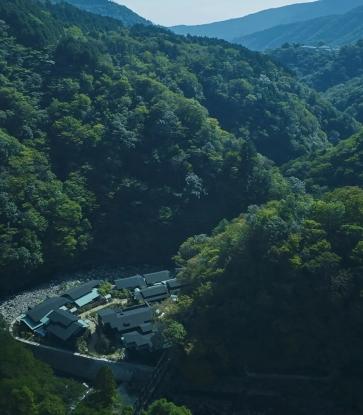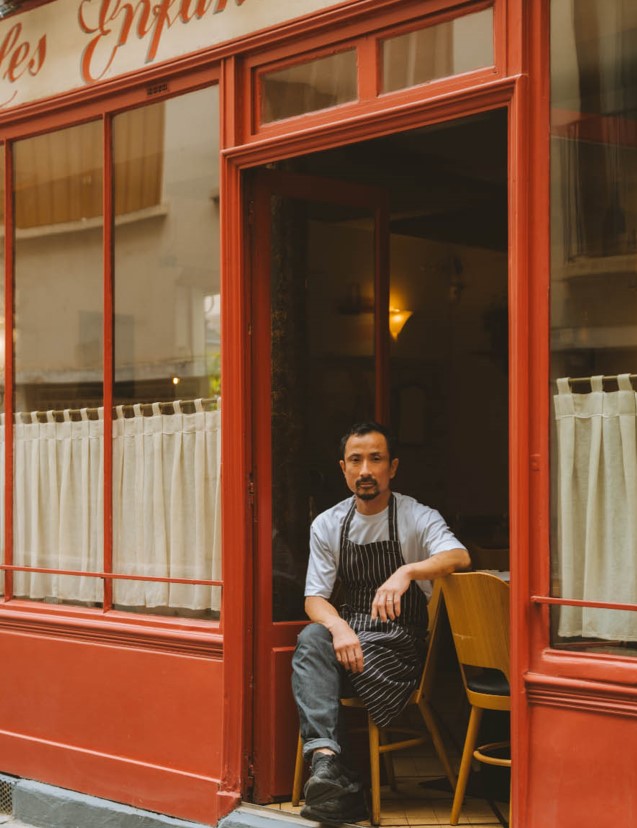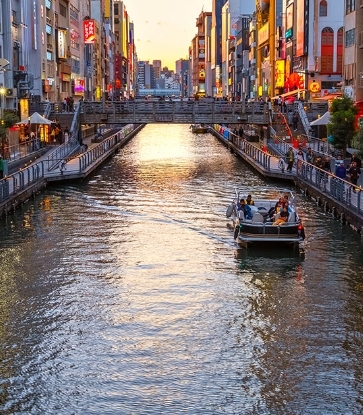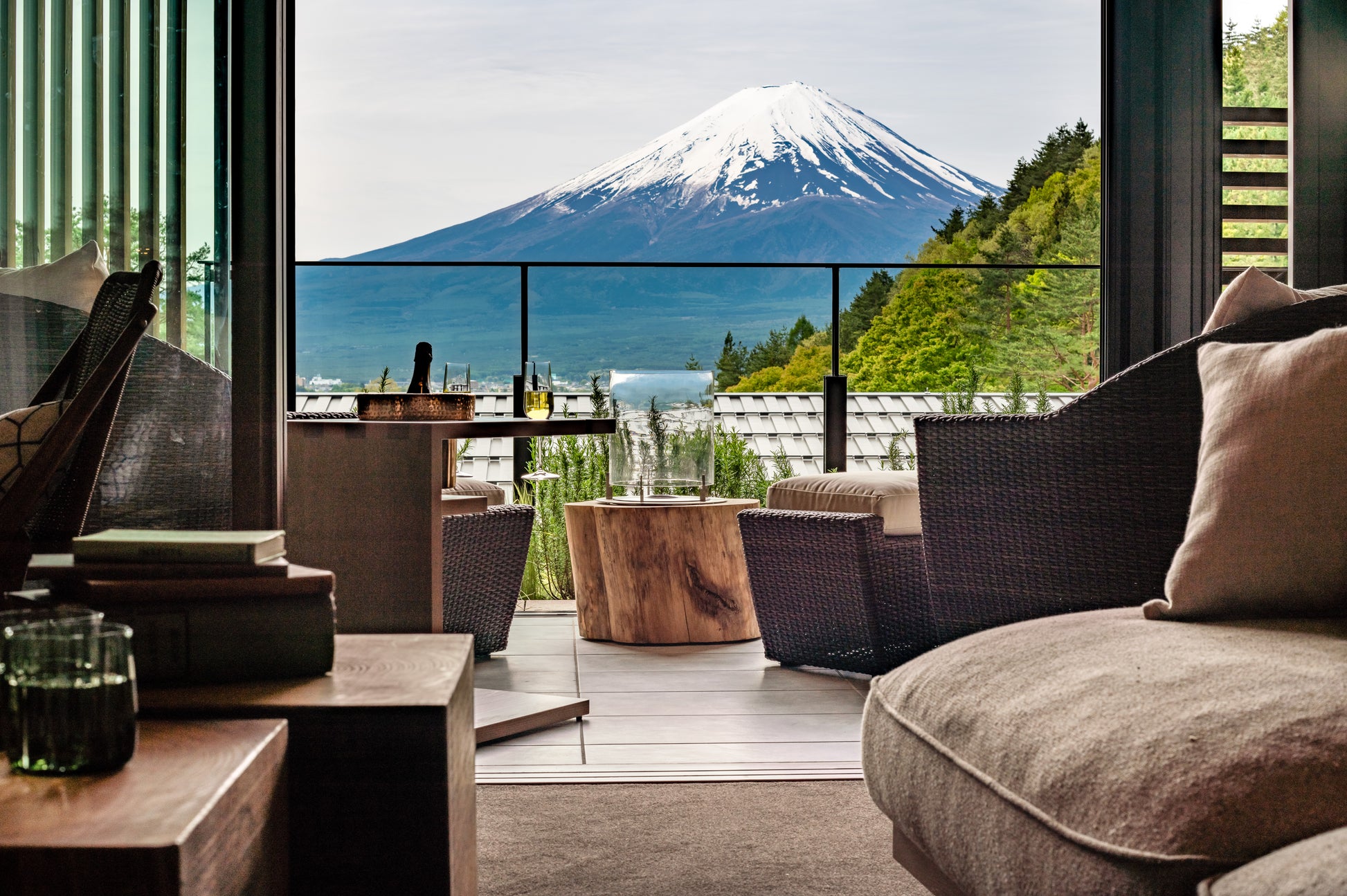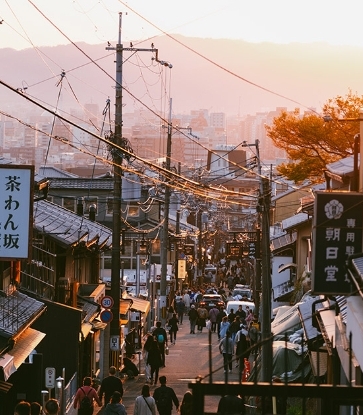
Nagashi Soumen
Nothing comes close to having cold noodles in the open air. Nagashi soumen is a speciality in Kyoto where the noodles are served through a long bamboo pipe filled with water. They are picked up by diners when sliding in front of them, dipped in the sauce and sprinkled with spring onion, then happily slurped down. Soumen are thinner noodles than ramen, coming off especially crisp and free of starch after the water bath.
Open only during summer, Hirobun from Kibune, Kyoto is the most famous Japanese restaurant turning out nagashi soumen. It takes advantage of the natural surroundings, setting up a bamboo deck on the riverbank. If there is any residual stress lingering in your mind, listening to the flow of the water while enjoying the chilled delicacy should bring it to a close.
Hirobun
87, Kuramakibunecho, Sakyo Ward, Kyoto
Opening hours: 11am-7pm
Service time of nagashi soumen: 11am-4pm, June to September (it’s recommended to arrive early to get in line)
Though eel doesn’t really get in season until autumn, the custom to eat it for heat relief is deep-rooted in Japan. Legend has it that it originated during the Edo period when an eel restaurant owner looked for ways to boost sales in the hot summer time. He launched a special meal on the day of Doyo-ushi (the hottest day of the year), and claimed that the fish could help diners maintain good health during the heat, because eel in Japanese (unagi) rhymes with “ushi”.

Over time, the promotion gained popularity and became the quintessential summer ritual in the country. Weird it might sound, there is some truth behind the theory. High in protein, calcium, Vitamin A, B1, B2, D and E, eel is definitely a solid choice to replenish energy. Its lavish flavour surely makes it easy for the public to buy into the thought.
Traditional unagi donburi, or una-don, is made with eel grilled and steamed, then brushed with a thick, sweet sauce and charcoal grilled for a second time. The cooked fish is finally served on rice. It’s a treat that you wouldn’t want to miss, and Nodaiwa in Tokyo turns it into an art. The outlet opened in 1850 has won one
Michelin star status for the uber-sumptuous una-don it offers.
The city of Nagoya takes the eel obsession to another level. Hitsumabushi, created by restaurant Atsuta Houraiken in 1873, separates an eel in four parts for different styles of serving. It is eaten with rice; mixed with seaweed, wasabi and spring onion; soaked in hot tea or broth; and finally, consumed in the diner’s favourite style.
1 Chome-5-4 Higashiazabu, Minato-ku, Tokyo
Opening time: 11am-1:30pm; 5pm-8pm
Days off: Sundays, sometimes Monday; days of doyo-ushi; summer vacation; New Year’s Eve and New Year Day
The joint has more outlets in Ginza, Shimokitazawa and Takashimaya.

Pick seasonal fruits in a farm
During summer, many farms in Japan are open to public to experience harvesting fruits. What's better, they can taste the fruits at their freshest. It's a rare chance for urban dwellers to get up close and personal with where our food comes from.
The most common types found in these farms are cherry, nectarine and blueberry, but if you're in luck, you might also find grape, melon, plum, watermelon, or even less common fruits such as loquat on the field. If you're taking a bunch of plums away, it's worth the effort to buy rock sugar, shochu, and a large glass jar to make plum wine at home – in classic Japanese style.
The pricing method varies from one farm to another. Some charge a flat fee (at around 1,000 yen) which allows patrons to eat as much as they can during the visit. Others provide free entry, with the price determined by the weight of the harvest. Usually visitors get a bargain compared to the market price, but the downside is that they can't eat the fruits until leaving. Most fruit farms are located in the countryside, which could require connecting transportation. It's worth a moment to contact the farm in advance about the kinds of fruits available, and complementary facilities like dining or barbecue area.
The peak seasons for different kinds of fruits:
Plum: Mid-May to Mid-July
Loquat: June
Cherry: Early June to late July
Blueberry and melon: Early June to Late August
Nectarine, watermelon and prune: Early July to Late August

Revel in summer desserts
Shaved ice and wagashi are the unofficial national summer desserts in Japan. Formerly a casual street food, shaved ice has been taken more seriously. Shops specialising in the chilled sensation opened one after another in Tokyo, Osaka and other big cities. Not only do they focus on different pairing ingredients, how the ice is made has also been a hot (or cool in this case) topic.
Hachiku was opened two years ago and is known for the use of fresh fruits. In its latest promotion, patrons can choose to have the natural ice for an extra 100 yen. The natural ice is harvested in Nikko during winter and stored in icehouse and boasts high mineral content and transparency. It melts slower with a slight sweetness, making it the premium option for the frozen dessert.
Kooriya Peace is another notable shaved ice destination. The joint is famous for the ever-changing menu, with holiday-exclusive flavours in addition to a fresh lineup. It launched shaved ice inspired by French hydrangea this past spring to many diners’ pleasure. The combination of red and blue ice from strawberry and blueberry, drizzled with cream and decorated with floral jelly, is difficult to resist.
When it comes to wagashi, transparency and pastel tones are the running theme in many summer creations. Some take cue from the starry sky and goldfish, and their alluring looks make you think twice before biting on them.
Kyoto has a high concentration of historical establishments with expertise in the exquisite confection. While there, try your hand at making wagashi at Kanshundo. You will learn from dessert cooks who also prepare the sweets sold in the shop. You can choose to make four types of wagashi to go with matcha (2160 yen), or three types with Sencha (1620 yen). Four classes are held every day, each lasting for an hour and 15 minutes. Remember to book two days in advance and show up 10 minutes before class time.
Hachiku
1/F, Toei Building, 32-6, 3 Chrome, Nishi-Ikebukuro, Toshima, Tokyo
Opening time: 11:30am-8pm
Kooriya Peace
1/F Kichijoji Jizo Building, 1-9-9 Kichijoji Minamicho, Musashino, Tokyo
Opening time: 1pm-9pm (weekdays); 12nn-8pm (weekends)
Kanshundo
511-1 Chayamachi, Kawabatadori-Shomen-Higashi-iru, Higashiyama-kun,
Kyoto (East branch)
1-1 Saga Shakado Daimon-cho, Ukyo-ku, Kyoto (Sagano branch)

Take to the streets
If you have watched enough Japanese films and TV drama, summer festivals shouldn’t be foreign to you. The festivals are lined with stalls that provide food and all kinds of carnival games, culminating in spectacular fireworks.
It’s also a rare occasion where you will see people eat on the street. Barring the yatai culture in Fukuoka, eating while walking is considered impolite in Japanese culture. As the social restriction is lifted during the festival, indulge in festive favourites like takoyaki, okonomiyaki, fried noodles, tori no karaage (Japanese fried chicken nuggets) and imagawayaki. Grab an ice-cold beer or shaved ice on the side, and there you have the coolest summer night you could ask for.








